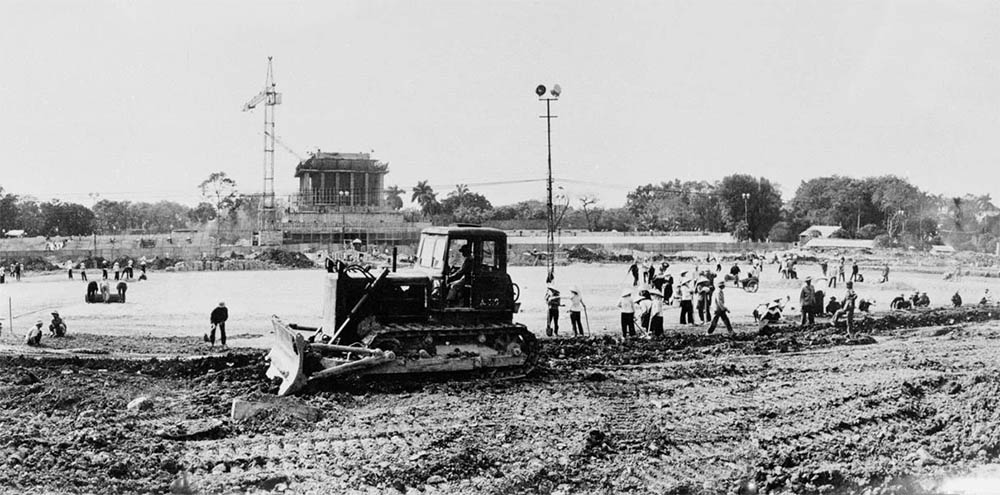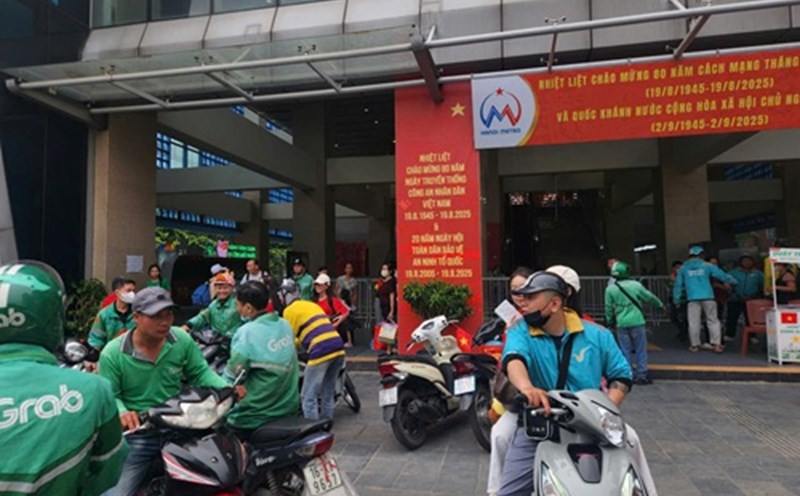The National Achievements - 80 years of independence, freedom and Happiness Exhibition attracts a large number of visitors from many provinces and cities neighboring Hanoi. The exhibition is divided into many areas, with scientific arrangement according to the theme for ministries, branches and localities across the country.
At the exhibition, visitors can recall the glorious past of the nation through two great resistance wars, and witness the journey to overcome hardship, transforming to rapidly achieve economic and social achievements so that the country can reach a new era, deeply integrating with the international community.
Coming to the exhibition, looking at valuable images - documents about the 80 year journey of the Fatherland - many visitors expressed their emotions. Including the image of Uncle Ho Mausoleum and Ba Dinh Square under construction from 1973 - 1975 in the exhibition hall of the Government Office.
After President Ho Chi Minh passed away, on November 29, 1969, the Politburo of the Party Central Committee issued a Resolution on the construction of Uncle Ho's Mausoleum. The Tomb of the Son was placed in Ba Dinh Square - where Uncle Ho read the Declaration of Independence on September 2, 1945, marking a turning point in the history of the nation.
According to documents recorded by the National Archives Center, it was initially expected that the construction drawing and design stage of the construction organization was expected to last 12 months and the Lang construction would begin in the dry season of 1972 - such as 2000.
However, in 1972, the US escalated the North's bombing, so the construction was delayed. On September 2, 1973, the project was officially started.

During those years, although everything was still congested, the whole country still turned to the construction of Uncle Ho's Mausoleum, everyone wanted to contribute their strength, materials... to express their love for him. The Uncle Ho Mausoleum project was inaugurated on August 29, 1975, 21.6m high and 31m wide (according to documents from the exhibition booth of the Government Office).
Over the years, Uncle Ho's Mausoleum and Ba Dinh Square have become a symbolic image of history. Ba Dinh Square has been considered the most important square in Vietnam since the autumn of September 2, 1945 . This place has always been chosen as the location for important events of the nation and the country.
According to historical documents recorded from the Imperial Citadel of Thang Long, Ba Dinh Square is 320m long, more than 100m wide, divided into 240 squares for growing grass, and is the image of the province's communal houses in the ancient Vietnamese villages; in the middle is a 30m high flagpole.
Ba Dinh Square was originally the western gate of ancient Hanoi. Before the August Revolution in 1945, Ba Dinh Square was also known as round Point Pugininer Square. In the first half of the 20th century, the French had a renovation project but it was not implemented.
The square was named Ba Dinh in 1945 to commemorate the anti-French uprising of the Thanh Hoa people at the end of the 19th century.
Ba Dinh Square is like a mark, an emotional historical symbol, as this place has witnessed many important turning events of the Vietnamese people.
On September 2, 1975, a rally and parade took place in Ba Dinh Square, a large-scale, solemn parade to celebrate the country's reunification was held with the participation of 400,000 people.
In the near future, on September 2, at the historic Ba Dinh Square, the whole country will turn to the A80 parade - on the occasion of the 80th anniversary of the successful August Revolution, the 80th anniversary of National Day on September 2.











